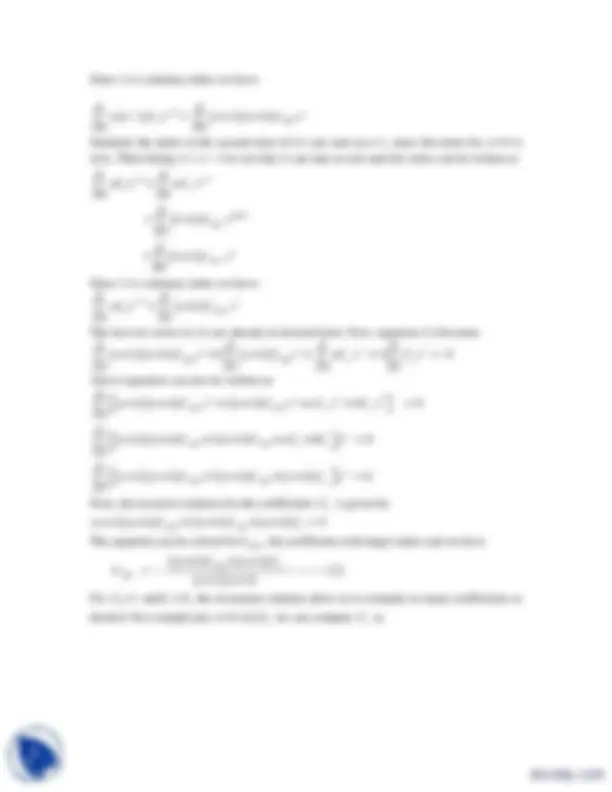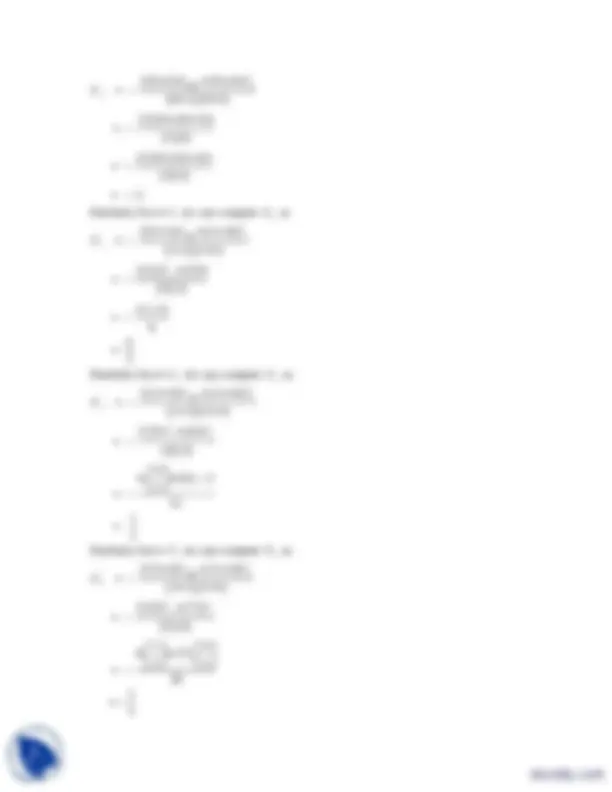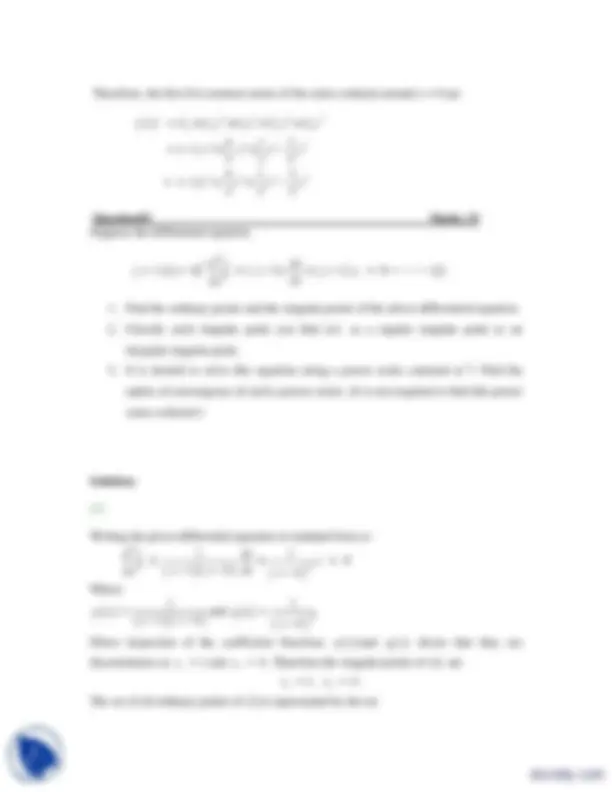





Study with the several resources on Docsity

Earn points by helping other students or get them with a premium plan


Prepare for your exams
Study with the several resources on Docsity

Earn points to download
Earn points by helping other students or get them with a premium plan
Community
Ask the community for help and clear up your study doubts
Discover the best universities in your country according to Docsity users
Free resources
Download our free guides on studying techniques, anxiety management strategies, and thesis advice from Docsity tutors
The solution to assignment #3 in mth401 (spring 2012) course. It includes finding the power series solutions and classifying singular points of a given differential equation around x = 0. The document also determines the radius of convergence of a power series solution centered at x = 7.
Typology: Exercises
1 / 7

This page cannot be seen from the preview
Don't miss anything!




MTH401 (Spring 2012)
Total marks: 30 Lecture # 28-
Due date: 04-07-
DON’T MISS THESE Important instructions:
Upload assignments properly through LMS only, (No Assignment will be accepted through email).
All students are directed to use the font and style of text as is used in this
document.
In order to attempt this assignment you should have full command on
Lecture No. 28 to Lecture No. 34.
This is an individual assignment, not group assignment, so keep in mind that you
are supposed to submit your own, self made & different assignment even if you discuss the questions with your class fellows. All similar assignments (even with
some meaningless modifications) will be awarded zero marks and no excuse will
be accepted. This is your responsibility to keep your assignment safe from others.
Above all instructions are for all assignments so may not be mentioned in future. Solve the assignment on MS word document and upload your word (.doc) files only. Do not solve the assignment on MS excel. If we get any assignment on MS excel or any format other than word file then it will not be graded.
Assignments through e-mail are not acceptable after due date (If there is any
problem in submitting your assignment through LMS, you can send your solution
file through email with in due date). You are advised to upload your assignment
at least two days before Due date.
Question#1 Marks 15
Solve the following initial value problem using a power series representation of the
solution around x 0. Find the recurrence relation and the first five nonzero terms of the
series solution.
'
2
2
d y dy x y y y dx dx
Solution:
point, so we can look for a power series solution of the above initial value problem
having the form
0
n n n
Further notice that the initial conditions will imply that
C 0 (^) 1, C 1 0
Also
1
0
2
0
2
2
n n n n n n dy n C x dx
d y n n C x dx
Substituting the above relations into the given differential equation, it becomes
2 1
0 0 0
2 1 1
0 0 0 0
2 1
0 0 0 0
n n n n n n n n n
n n n n n n n n n n n n
n n n n n n n n n n n n
n n C x x n C x C x
n n C x n C x n C x x C x
n n C x n C x n C x C x
n n n
shift of indices. The index in first term can start at n 2 , since the terms for n 0 and
n 1 are both zero. Then letting k n 2 we see that k can start at zero and the series
can be written as
2 2
0 2
2 0
n n n n n n
k k k
n n C x n n C x
k k C x
0 1 0 2
Similarly for n 1 , we can compute C 3 as
1 1 1 3
2
Similarly for n 2 , we can compute C 4 as
2 1 2 4
3 2
Similarly for n 3 , we can compute C 5 as
3 1 3 5
4 3
Therefore, the first five nonzero terms of the series solution around x = 0 are
2 3 4 5 0 2 3 4 5
2 3 4 5
2 3 4 5
y x C C x C x C x C x
x x x x
x x x x
Question#2 Marks 15
Suppose the differential equation.
2
2
2
d y dy x x x x y dx dx
irregular singular point.
radius of convergence of such a power series. (It is not required to find this power
series solution!)
Solution:
Writing the given differential equation in standard form as
(^)
2
2
2
d y dy y dx x^ x^ dx x
Where
p x x x
and (^)
2
q x x
Direct inspection of the coefficient functions p (^) x (^) and q x (^) shows that they are
discontinuous at x 1 (^) 1 and x (^) 2 4. Therefore the singular points of (^) 1 are
x 1 (^) 1, x 2 4.
The set of all ordinary points of (^) 1 is represented by the set